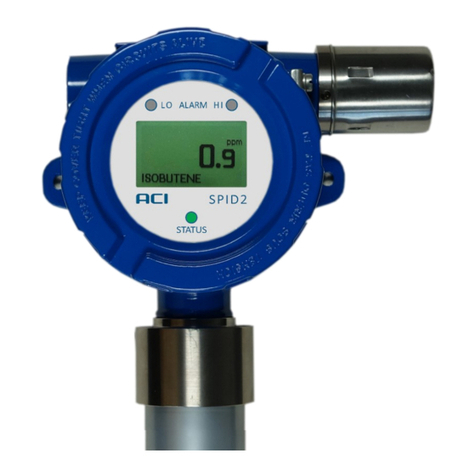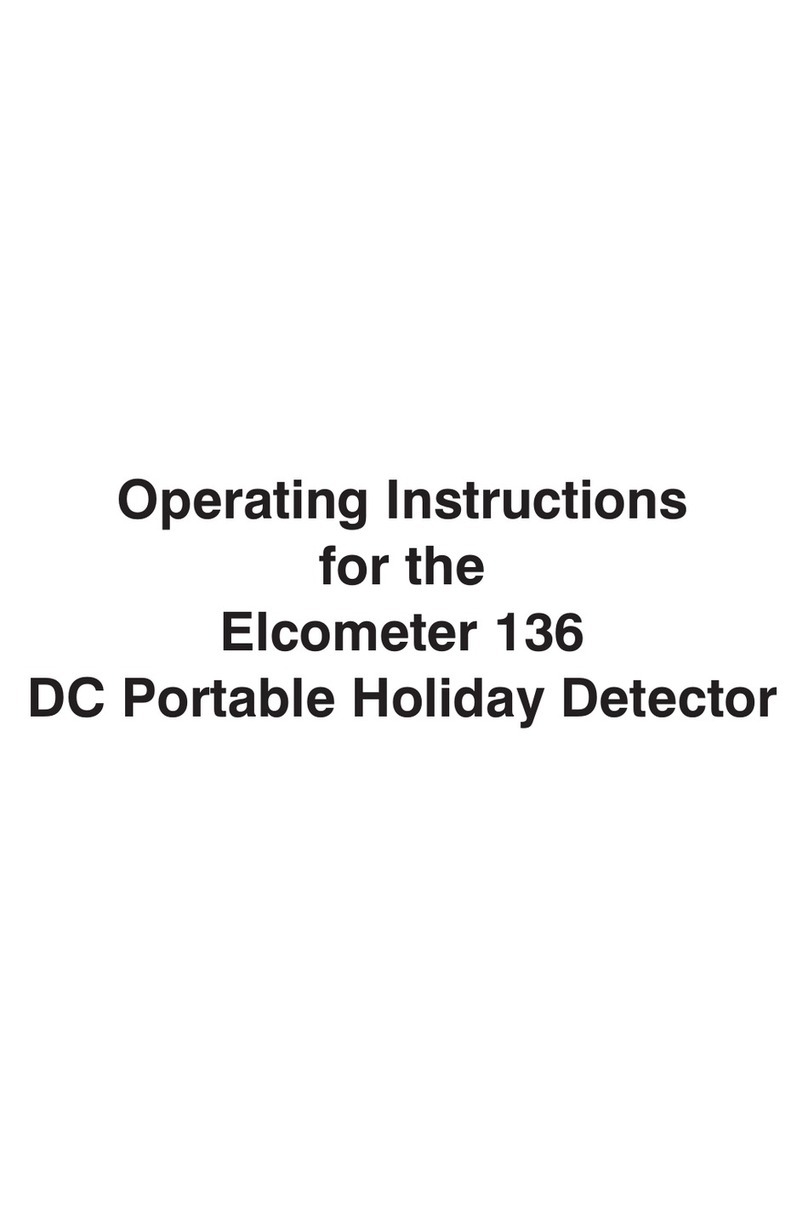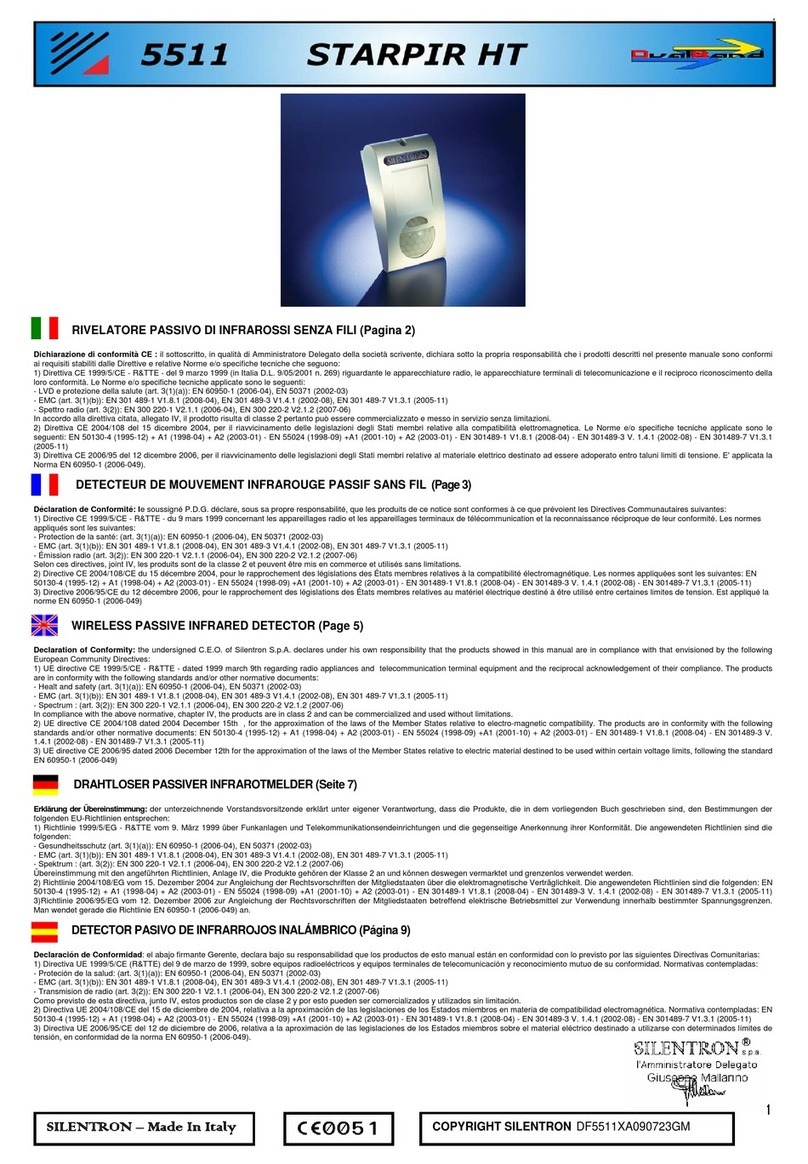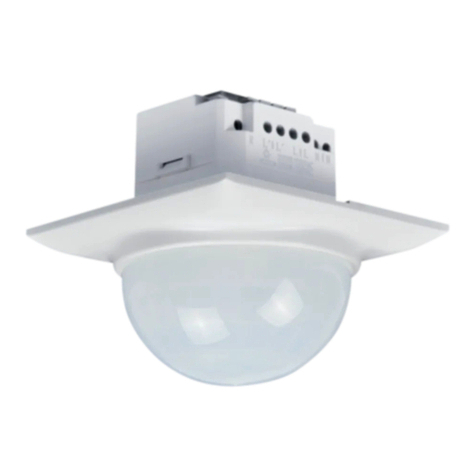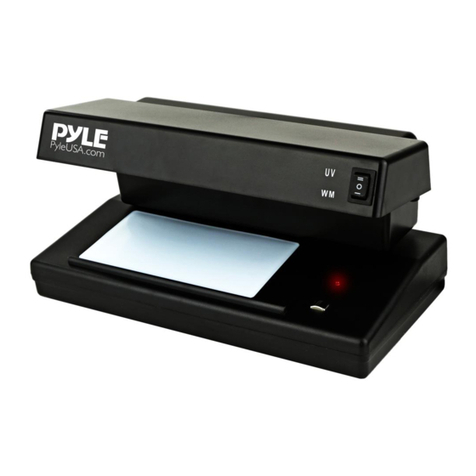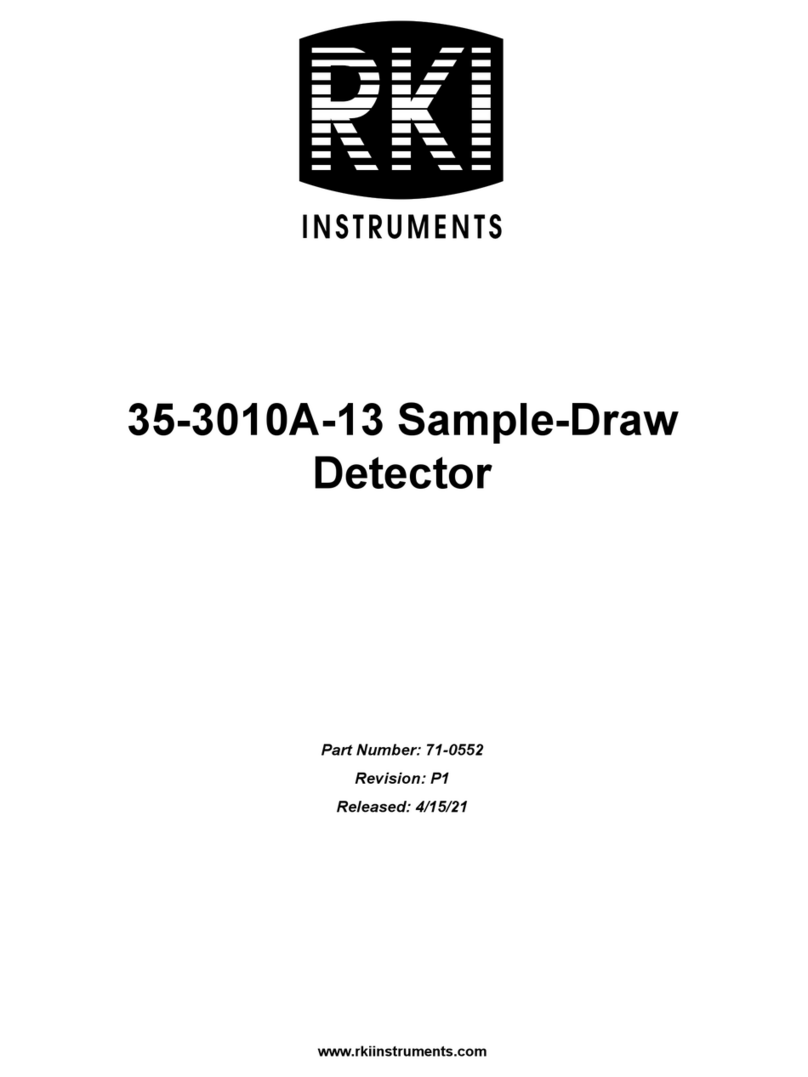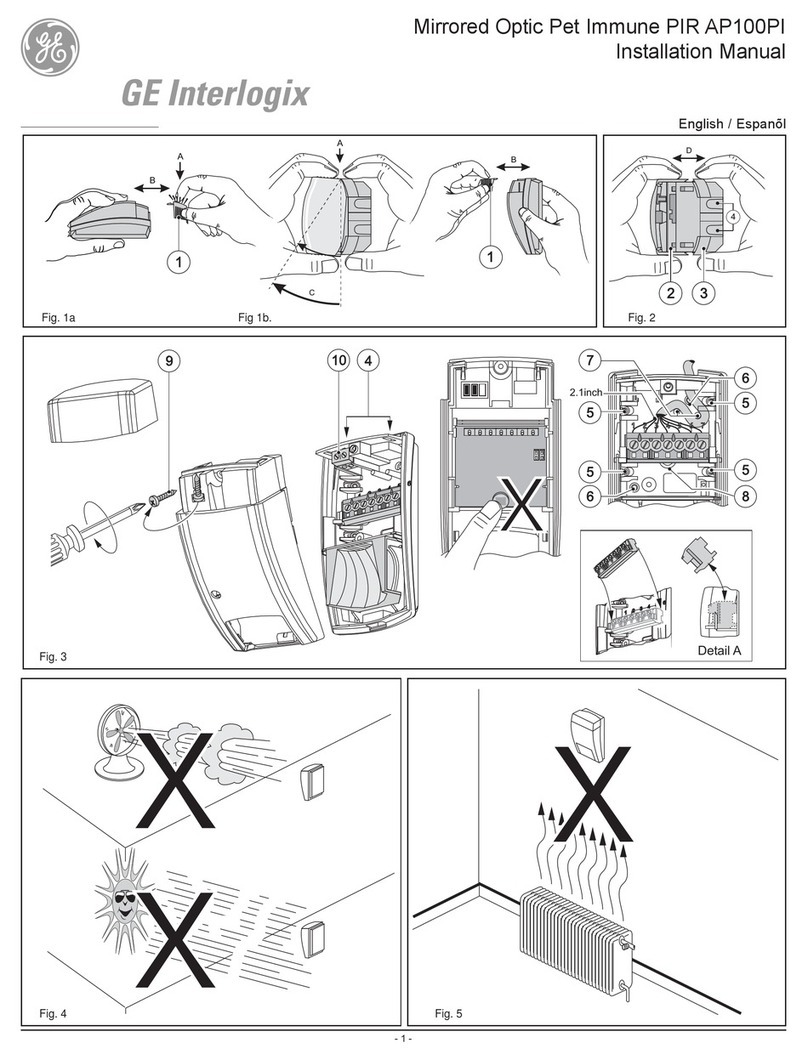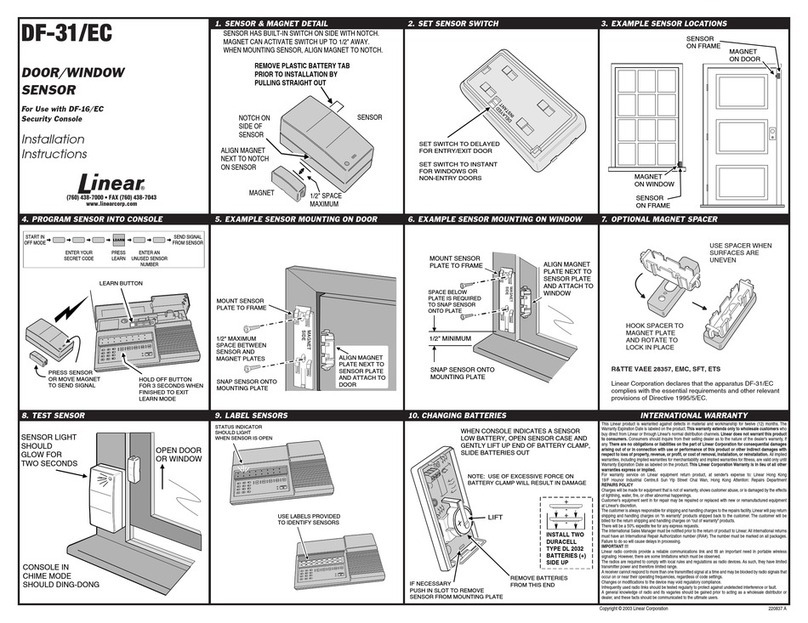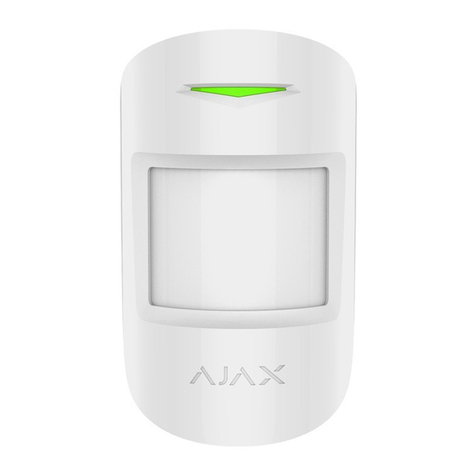aci Carbon Dioxide Duct Series Installation instructions

Automation Components, Inc.
2305 Pleasant View Road | Middleton, WI 53562
Phone: 1-888-967-5224 | Website: workaci.com
Page 1
Version: 4.0
I0000744
FIGURE 1: DIMENSIONS
CARBON DIOXIDE DUCT SERIES
Installation & Operation Instructions
A/CO2-DUCT
Phone: 1-888-967-5224
Website: workaci.com
GENERAL INFORMATION
The ACI Carbon Dioxide Duct Series (A/CO2-D)
monitors the carbon dioxide (CO2) levels in
industrial, commercial, school, and oce-type
environments. The concentration of CO2 is a
strong indication of the overall indoor air
quality. The A/CO2 Series is based on a single
beam, non-dispersive infrared technology
and is a cost-ecient solution for measuring
carbon dioxide levels for building climate
control. In addition, ABC software eliminates
the need for manual calibration. Carbon
Dioxide concentration is measured up to
2,000 ppm and is converted into proportional
analog outputs. The factory default output is
4-20 mA, whereas 0-5 VDC and 0-10 VDC
outputs are eld selectable via integral dip
switches. The A/CO2-D provides data which
can be used in conjunction with a Building
Automation System or Demand Control
Ventilation to decrease energy consumption while creating a healthier indoor climate.
MOUNTING INSTRUCTIONS
Since there might be a substantial pressure dierence in duct mounting applications, it is essential to avoid
ambient air from suction into the duct mounting box. For correct function it is indispensable that the
sealing of the box cover, the cable entry bushings, the cable feed through and the duct entrance are
absolutely tight.The duct entrance may need extra sealing paste in order to prevent leakage. The PCB must
be handed carefully and protected from electrostatic discharge.
• Place the O-ring around the hole at the back of the box. See figure 2.
• Electrical cable entry: The box has a factory mounted cable entry bushing. Never feed more than one
cable through each cable entry bushing, or else gas might leak through!
• Mounting the tube: Drill a 1” (25 mm) diameter hole for the sampling probe and two holes with 0.16” (4
mm) diameter for the screws (5) into the air duct and mount the tube (1) with the gasket (2). The sampling
probe should be mounted with the largest locking knob on top. The unit can be mounted with the air
coming from the left or right.
• Attaching the sensor box is made to the sampling probe by a snap-in bayonet tting. Orient the box onto
the sampling probe so that the box upside is on the same side as the largest locking knob (3). When the
probe is tted into the notches of the box, then turn the box clockwise until stop (see Figure 2). Position 1
indicates open where the box can be removed from the sampling probe. In position 2 the box is locked to
the probe.
3.31” (84mm)
5.59”
(142mm)
5.98”
(151.89mm)
8.03” (203.96mm)
1.65”
(41.91mm)
1.81”
(46mm)
WIRING
PRECAUTIONS
• Remove power before wiring. Never
connect or disconnect wiring with power
applied.
• When using a shielded cable, ground the
shield only at the controller end.
Grounding both ends can cause a ground
loop.
• It is recommended you use an isolated
UL-listed class 2 transformer when
powering the unit with 24 VAC. Failure to
wire the devices with the correct polarity
when sharing transformers may result in
damage to any device powered by the
shared transformer.
• If the 24 VDC or 24VAC power is shared
with devices that have coils such as
relays, solenoids, or other inductors,
each coil must have an MOV, DC/AC
Transorb, Transient Voltage Suppressor
(ACI Part: 142583), or diode placed across
the coil or inductor. The cathode, or
banded side of the DC Transorb or diode,
connects to the positive side of the power supply. Without these snubbers, coils produce very
large voltage spikes when de-energizing that can cause malfunction or destruction of electronic
circuits.
Open the cover of the enclosure. ACI recommends 16 to 26 AWG twisted pair wires or shielded cable
for all transmitters. Refer to FIGURE 3 for wiring diagrams. All wiring must comply with all local and
National Electric Codes.
Note: The 4-20mA output requires 3 wires.
Note: When using a shielded cable, be sure to connect only (1) end of the shield to ground at the
controller. Connecting both ends of the shield to ground may cause a ground loop. When removing the
shield from the sensor end, make sure to properly trim the shield to prevent any chance of shorting.
DIP SWITCH CONFIGURATION
SW 1 sets the Output Signal.
SW2 controls the ABC Logic.
The default setting is 0-10 VDC output (switch 1 on) and ABC on (switch 2 on). For 0-5 VDC output set
switch 1 to o. The 4-20 mA output can be used with switch 1 in the on or o position.
ABC stands for automatic baseline correction, a self-calibration function for achieving maintenance-free
gas sensors. To turn o ABC, set switch 2 to o. The ABC Logic must be turned o in applications where
there is 24/7 occupancy. ie: Hospital

FIGURE 2: MOUNTING FIGURE 3: WIRING
0-10 or 0-5 VDC
4-20 mA
Automation Components, Inc.
2305 Pleasant View Road | Middleton, WI 53562
Phone: 1-888-967-5224 | Website: workaci.com
Page 2
Version: 4.0
I0000744
GENERAL INFORMATION
The ACI Carbon Dioxide Duct Series (A/CO2-D)
monitors the carbon dioxide (CO2) levels in
industrial, commercial, school, and oce-type
environments. The concentration of CO2 is a
strong indication of the overall indoor air
quality. The A/CO2 Series is based on a single
beam, non-dispersive infrared technology
and is a cost-ecient solution for measuring
carbon dioxide levels for building climate
control. In addition, ABC software eliminates
the need for manual calibration. Carbon
Dioxide concentration is measured up to
2,000 ppm and is converted into proportional
analog outputs. The factory default output is
4-20 mA, whereas 0-5 VDC and 0-10 VDC
outputs are eld selectable via integral dip
switches. The A/CO2-D provides data which
can be used in conjunction with a Building
Automation System or Demand Control
Ventilation to decrease energy consumption while creating a healthier indoor climate.
MOUNTING INSTRUCTIONS
Since there might be a substantial pressure dierence in duct mounting applications, it is essential to avoid
ambient air from suction into the duct mounting box. For correct function it is indispensable that the
sealing of the box cover, the cable entry bushings, the cable feed through and the duct entrance are
absolutely tight.The duct entrance may need extra sealing paste in order to prevent leakage. The PCB must
be handed carefully and protected from electrostatic discharge.
• Place the O-ring around the hole at the back of the box. See figure 2.
• Electrical cable entry: The box has a factory mounted cable entry bushing. Never feed more than one
cable through each cable entry bushing, or else gas might leak through!
• Mounting the tube: Drill a 1” (25 mm) diameter hole for the sampling probe and two holes with 0.16” (4
mm) diameter for the screws (5) into the air duct and mount the tube (1) with the gasket (2). The sampling
probe should be mounted with the largest locking knob on top. The unit can be mounted with the air
coming from the left or right.
• Attaching the sensor box is made to the sampling probe by a snap-in bayonet tting. Orient the box onto
the sampling probe so that the box upside is on the same side as the largest locking knob (3). When the
probe is tted into the notches of the box, then turn the box clockwise until stop (see Figure 2). Position 1
indicates open where the box can be removed from the sampling probe. In position 2 the box is locked to
the probe.
+24 VDC or 24 VAC
Supply Voltage
Ground or Signal Common
0-5 or 0-10 VDC Output
+24 VDC or 24 VAC
Supply Voltage
Ground or Signal Common
4-20mA Output
WIRING
PRECAUTIONS
• Remove power before wiring. Never
connect or disconnect wiring with power
applied.
• When using a shielded cable, ground the
shield only at the controller end.
Grounding both ends can cause a ground
loop.
• It is recommended you use an isolated
UL-listed class 2 transformer when
powering the unit with 24 VAC. Failure to
wire the devices with the correct polarity
when sharing transformers may result in
damage to any device powered by the
shared transformer.
• If the 24 VDC or 24VAC power is shared
with devices that have coils such as
relays, solenoids, or other inductors,
each coil must have an MOV, DC/AC
Transorb, Transient Voltage Suppressor
(ACI Part: 142583), or diode placed across
the coil or inductor. The cathode, or
banded side of the DC Transorb or diode,
connects to the positive side of the power supply. Without these snubbers, coils produce very
large voltage spikes when de-energizing that can cause malfunction or destruction of electronic
circuits.
Open the cover of the enclosure. ACI recommends 16 to 26 AWG twisted pair wires or shielded cable
for all transmitters. Refer to FIGURE 3 for wiring diagrams. All wiring must comply with all local and
National Electric Codes.
Note: The 4-20mA output requires 3 wires.
NES
SW POT
4-20mA VIN COM
NES
VOUT
SW POT
Note: When using a shielded cable, be sure to connect only (1) end of the shield to ground at the
controller. Connecting both ends of the shield to ground may cause a ground loop. When removing the
shield from the sensor end, make sure to properly trim the shield to prevent any chance of shorting.
DIP SWITCH CONFIGURATION
SW 1 sets the Output Signal.
SW2 controls the ABC Logic.
The default setting is 0-10 VDC output (switch 1 on) and ABC on (switch 2 on). For 0-5 VDC output set
switch 1 to o. The 4-20 mA output can be used with switch 1 in the on or o position.
ABC stands for automatic baseline correction, a self-calibration function for achieving maintenance-free
gas sensors. To turn o ABC, set switch 2 to o. The ABC Logic must be turned o in applications where
there is 24/7 occupancy. ie: Hospital
4-20mA VIN COM VOUT

GENERAL INFORMATION
The ACI Carbon Dioxide Duct Series (A/CO2-D)
monitors the carbon dioxide (CO2) levels in
industrial, commercial, school, and oce-type
environments. The concentration of CO2 is a
strong indication of the overall indoor air
quality. The A/CO2 Series is based on a single
beam, non-dispersive infrared technology
and is a cost-ecient solution for measuring
carbon dioxide levels for building climate
control. In addition, ABC software eliminates
the need for manual calibration. Carbon
Dioxide concentration is measured up to
2,000 ppm and is converted into proportional
analog outputs. The factory default output is
4-20 mA, whereas 0-5 VDC and 0-10 VDC
outputs are eld selectable via integral dip
switches. The A/CO2-D provides data which
can be used in conjunction with a Building
Automation System or Demand Control
Ventilation to decrease energy consumption while creating a healthier indoor climate.
MOUNTING INSTRUCTIONS
Since there might be a substantial pressure dierence in duct mounting applications, it is essential to avoid
ambient air from suction into the duct mounting box. For correct function it is indispensable that the
sealing of the box cover, the cable entry bushings, the cable feed through and the duct entrance are
absolutely tight.The duct entrance may need extra sealing paste in order to prevent leakage. The PCB must
be handed carefully and protected from electrostatic discharge.
• Place the O-ring around the hole at the back of the box. See figure 2.
• Electrical cable entry: The box has a factory mounted cable entry bushing. Never feed more than one
cable through each cable entry bushing, or else gas might leak through!
• Mounting the tube: Drill a 1” (25 mm) diameter hole for the sampling probe and two holes with 0.16” (4
mm) diameter for the screws (5) into the air duct and mount the tube (1) with the gasket (2). The sampling
probe should be mounted with the largest locking knob on top. The unit can be mounted with the air
coming from the left or right.
• Attaching the sensor box is made to the sampling probe by a snap-in bayonet tting. Orient the box onto
the sampling probe so that the box upside is on the same side as the largest locking knob (3). When the
Automation Components, Inc.
2305 Pleasant View Road | Middleton, WI 53562
Phone: 1-888-967-5224 | Website: workaci.com
Page 3
Version: 4.0
I0000744
probe is tted into the notches of the box, then turn the box clockwise until stop (see Figure 2). Position 1
indicates open where the box can be removed from the sampling probe. In position 2 the box is locked to
the probe.
WIRING
PRECAUTIONS
• Remove power before wiring. Never
connect or disconnect wiring with power
applied.
• When using a shielded cable, ground the
shield only at the controller end.
Grounding both ends can cause a ground
loop.
• It is recommended you use an isolated
UL-listed class 2 transformer when
powering the unit with 24 VAC. Failure to
wire the devices with the correct polarity
when sharing transformers may result in
damage to any device powered by the
shared transformer.
• If the 24 VDC or 24VAC power is shared
with devices that have coils such as
relays, solenoids, or other inductors,
each coil must have an MOV, DC/AC
Transorb, Transient Voltage Suppressor
(ACI Part: 142583), or diode placed across
the coil or inductor. The cathode, or
banded side of the DC Transorb or diode,
connects to the positive side of the power supply. Without these snubbers, coils produce very
large voltage spikes when de-energizing that can cause malfunction or destruction of electronic
circuits.
Open the cover of the enclosure. ACI recommends 16 to 26 AWG twisted pair wires or shielded cable
for all transmitters. Refer to FIGURE 3 for wiring diagrams. All wiring must comply with all local and
National Electric Codes.
Note: The 4-20mA output requires 3 wires.
Note: When using a shielded cable, be sure to connect only (1) end of the shield to ground at the
controller. Connecting both ends of the shield to ground may cause a ground loop. When removing the
shield from the sensor end, make sure to properly trim the shield to prevent any chance of shorting.
DIP SWITCH CONFIGURATION
SW 1 sets the Output Signal.
SW2 controls the ABC Logic.
The default setting is 0-10 VDC output (switch 1 on) and ABC on (switch 2 on). For 0-5 VDC output set
switch 1 to o. The 4-20 mA output can be used with switch 1 in the on or o position.
ABC stands for automatic baseline correction, a self-calibration function for achieving maintenance-free
gas sensors. To turn o ABC, set switch 2 to o. The ABC Logic must be turned o in applications where
there is 24/7 occupancy. ie: Hospital
FIGURE 4: DIP SWITCH SETTINGS
4-20mA VIN COM VOUT
ON
1 2
DIP SWITCH

PRODUCT SPECIFICATIONS
Automation Components, Inc.
2305 Pleasant View Road | Middleton, WI 53562
Phone: 1-888-967-5224 | Website: workaci.com
Page 4
Version: 4.0
I0000744
WARRANTY
The A/CO2-DUCT Series is covered by ACI’s Five (5) Year Limited Warranty, which is located in the front of ACI’S
SENSORS & TRANSMITTERS CATALOG or can be found on ACI’s website: www.workaci.com.
24 VAC +/-20%, 50/60 Hz (half-wave rectier) | 16.5-40 VDC Max.
3 VA for 24 VAC, 3W for 24 VDC (peak); <0.9W (average)
Single beam infrared sensing technology (NDIR)
Diusion
0 to 2,000 ppm
Up to 10,000 ppm (factory set)
+/- 30 ppm and +/- 5% of reading
Output 1: 0-5 VDC or 0-10 VDC (Default) | Output 2: 4-20 mA (500 Ohm Load maximum)
Polarity protected
+/- 40 ppm +/- 3% of reading (@ 15-35°C; 20-70% RH and 101.3 kPa)
+ 1.6% reading per kPa (deviation from standard pressure 101.3 kPa)
≤ 2 minutes, diusion
< 1 minute (@ full specs < 15 minutes)
Various (see ordering grid)
+/- 1°F (+/- 0.6ºC)
32 to 122ºF (0 to 50ºC)
0 to 95%, non-condensing
Duct Box: PC & ABS blend, Flammability Rating UL94V-0
Cover: Makrolon® 6555 plastic, Flammability Rating UL94V-0
Pipe: PC & ABS blend, Flammability Rating UL94V-0
7,500 sq. ft maximum
4-6 ft
> 15 years (typical)
ABC algorithm (Automatic Baseline Correction)
NON-SPECIFIC INFORMATION
Supply Voltage:
Power Consumption:
Sensing Technology:
Sensing Method:
Measurement Range Default:
Extended CO2 Ranges:
Extended Range Accuracy:
CO2 Output Signal:
Fail Safe:
CO2 Accuracy :
Pressure Dependence:
Response Time:
Warm-Up Time:
Temperature Output Range:
Temperature Accuracy:
Operating Temperature Range:
Operating Humidity Range:
Enclosure:
Sensor Coverage Area:
Mounting Height:
Sensor Life :
Calibration
Note : Accuracy is dered after minimum three (3) ABC periods (1 period = 8 days) of continous operations | Note : In normal indoor air
quality (IAQ) applications | Corrosive environments are excluded | Note : Building CO2 levels must drop to 400 ppm same time during the
week for ABC to work properly | If the building is occupied 24 hours / day, ABC must be turned o
This manual suits for next models
1
Other aci Security Sensor manuals
Popular Security Sensor manuals by other brands
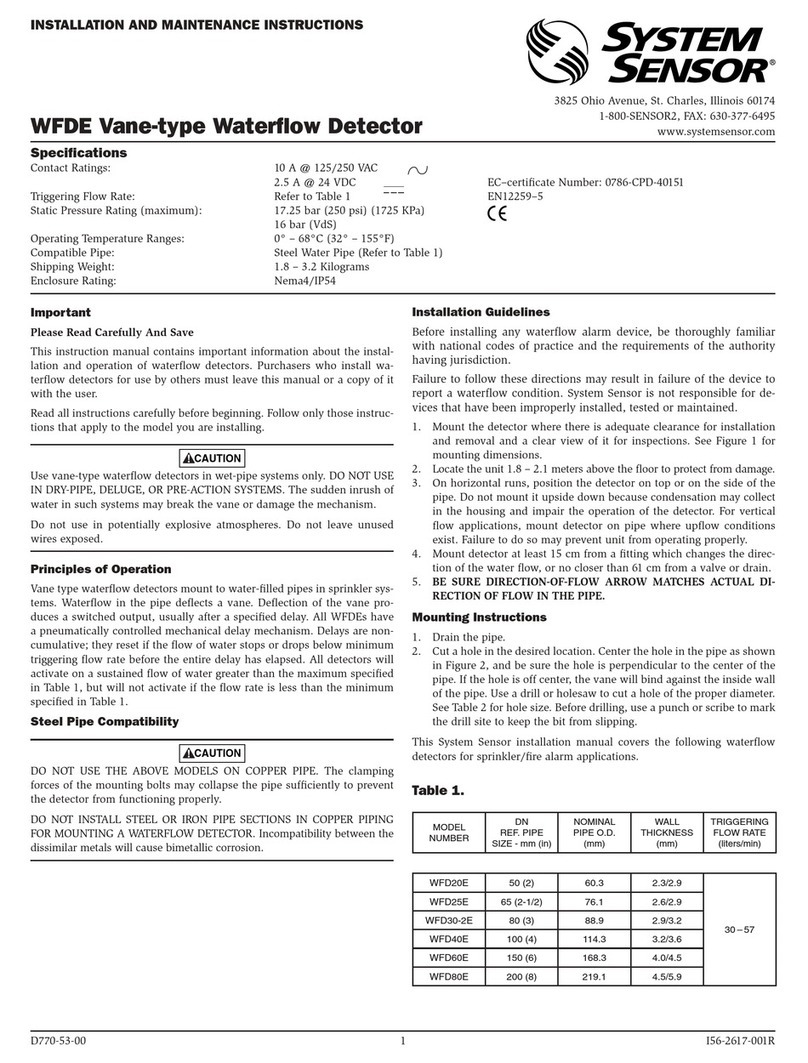
System Sensor
System Sensor WFDE Series Installation and maintenance instructions
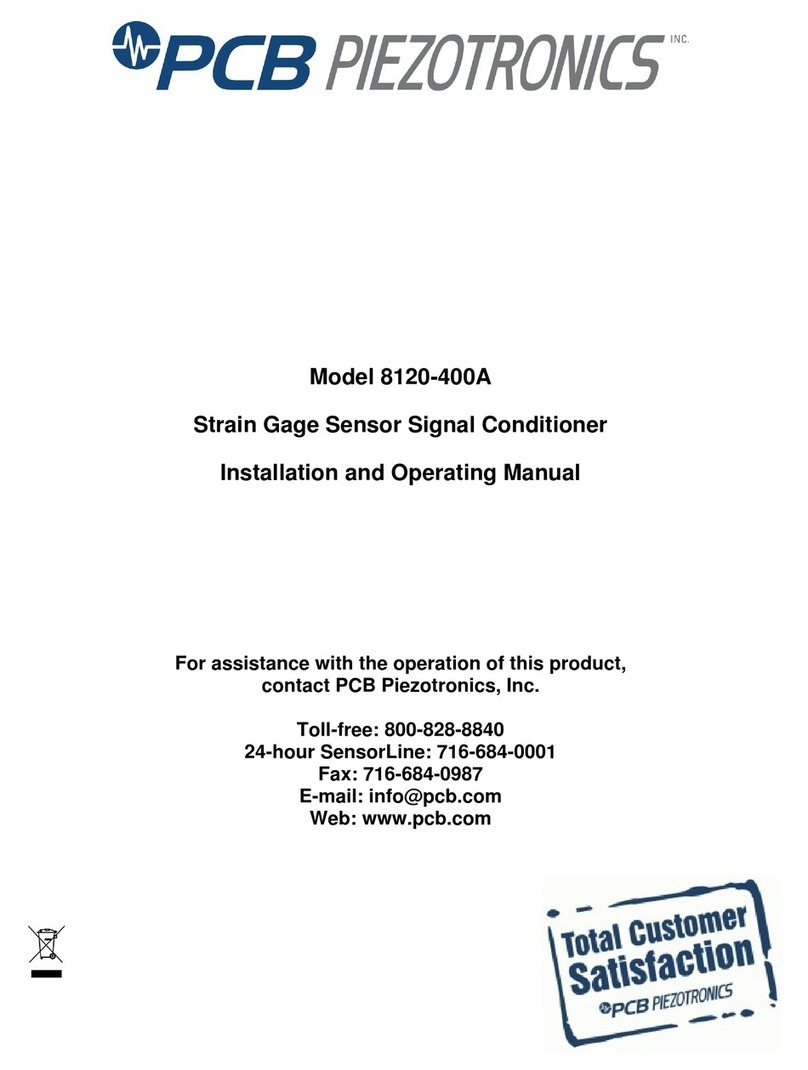
PCB Piezotronics
PCB Piezotronics 8120-400A Installation and operating manual
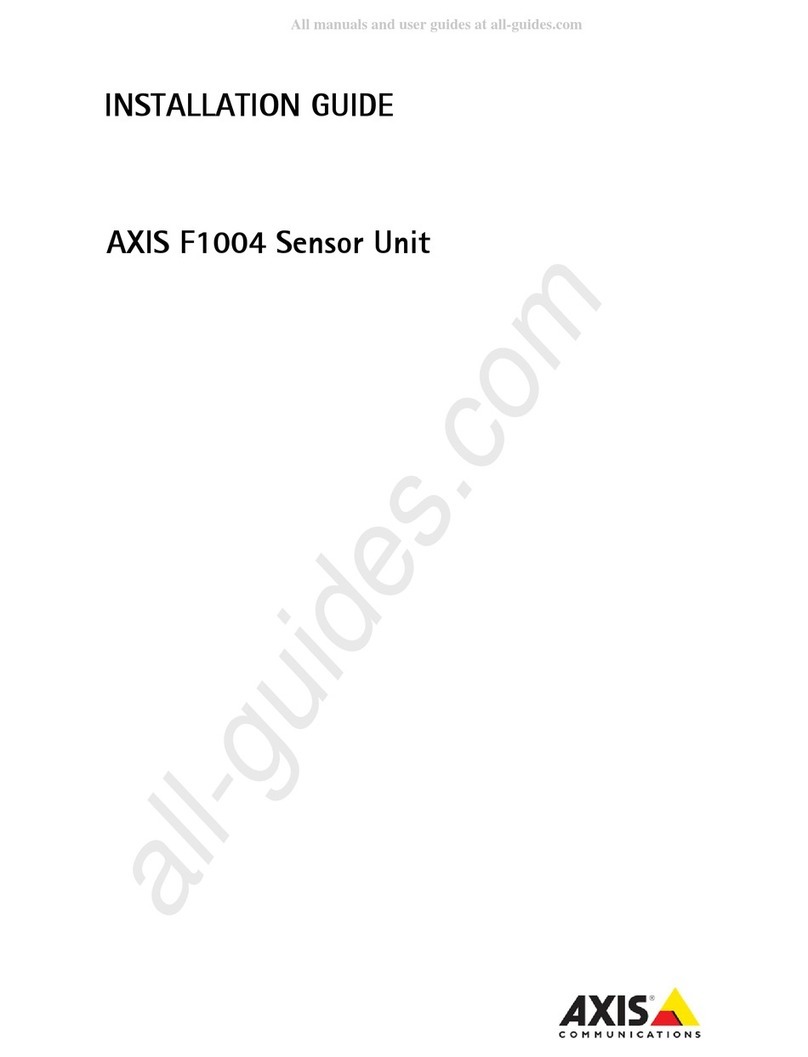
Axis
Axis F1004 installation guide
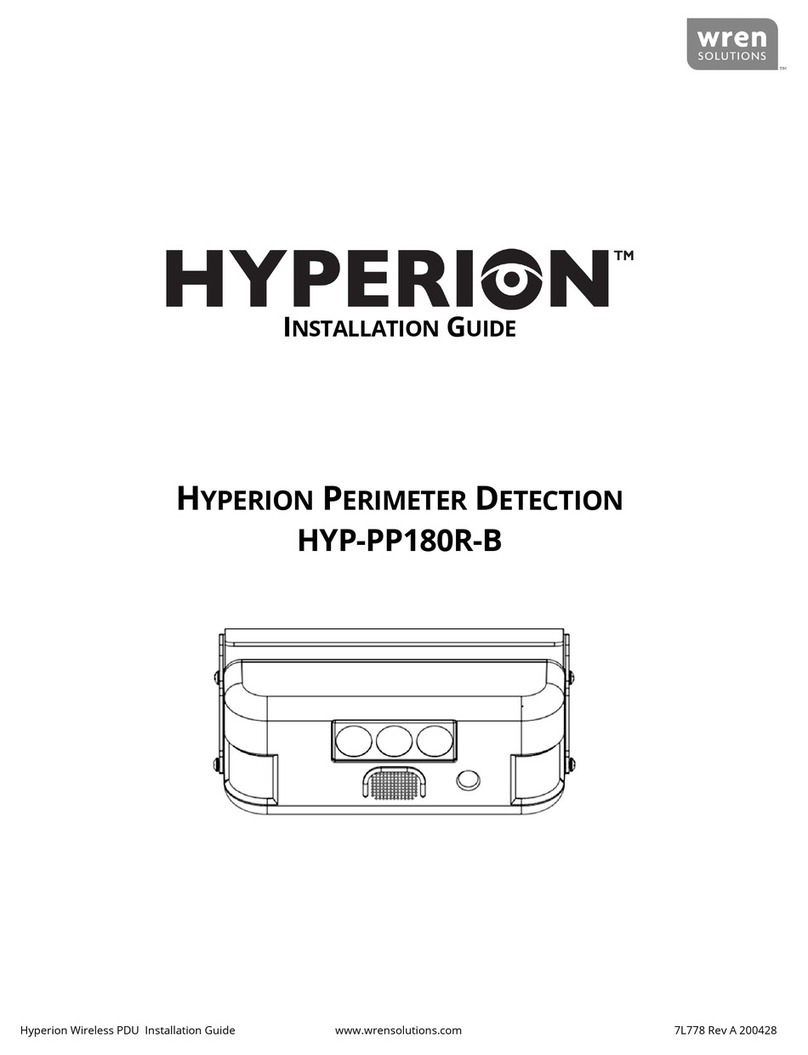
Wren
Wren HYPERION HYP-PP180R-B installation guide
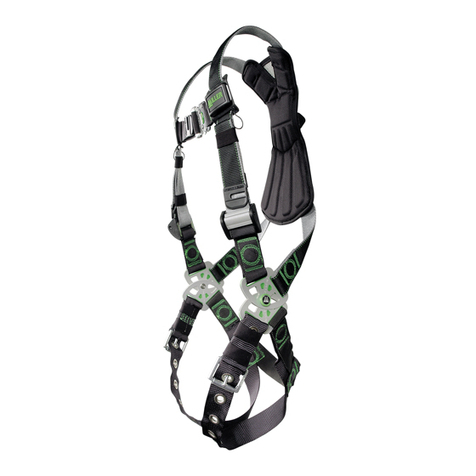
Honeywell
Honeywell Miller Revolution Harness manual
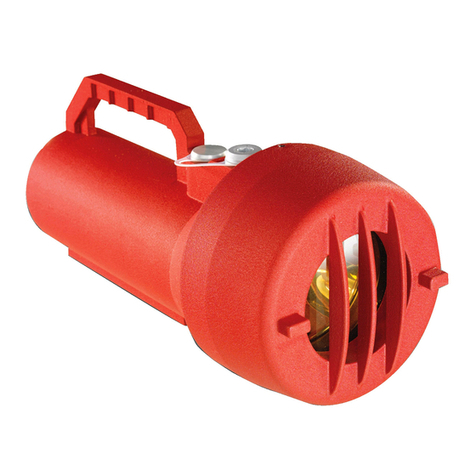
MSA
MSA General Monitors TL105 instruction manual

